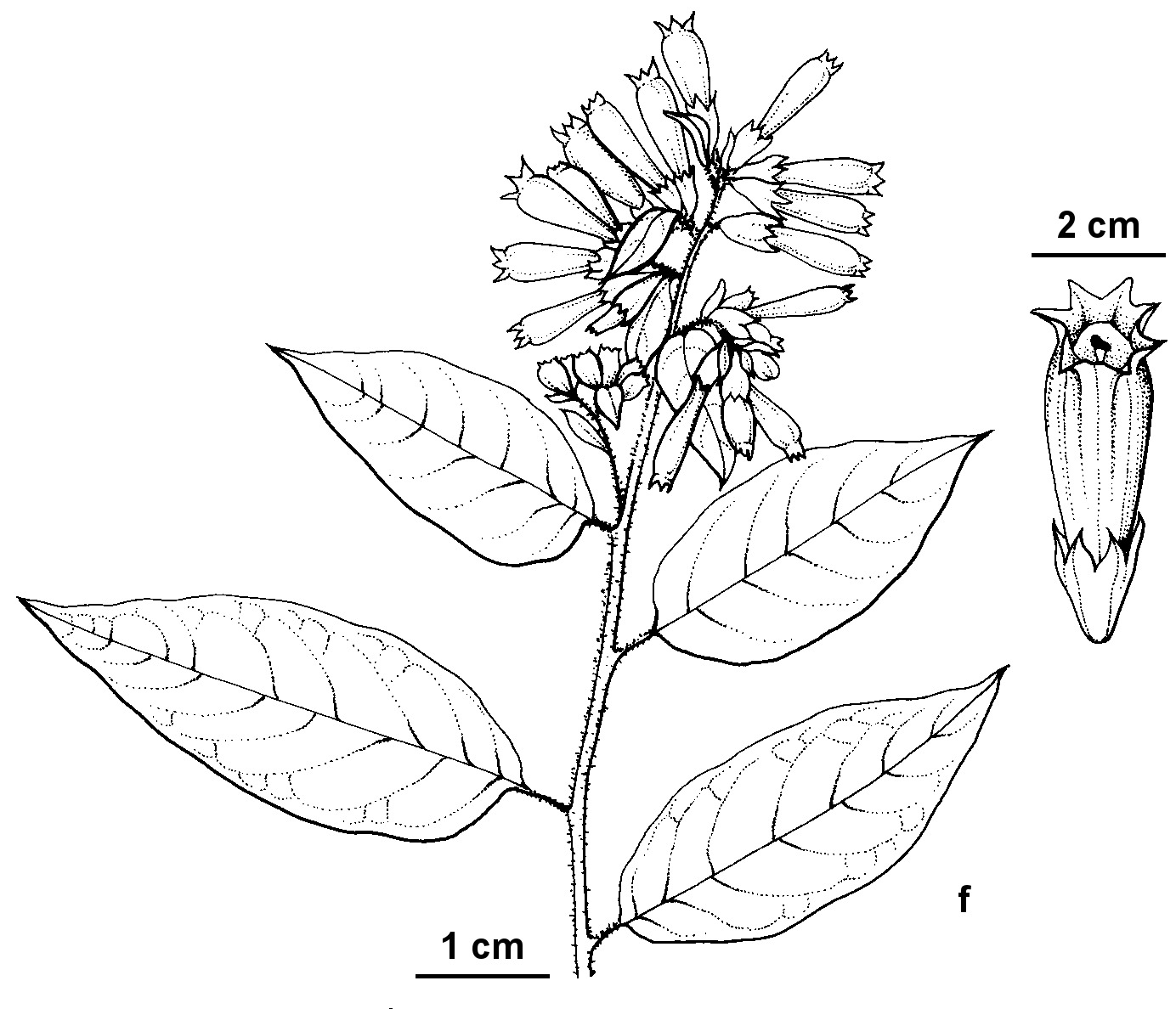
Hairy shrub to about 3 m tall. Leaves lanceolate, 6-14 cm long, 2-7 cm wide, hairy; stalk 1-2 cm long. Flower clusters dense, covered with purplish hair; summer to autumn. Calyx 6-8 mm long. Corolla reddish to maroon, the tube 1.5-2 cm long. Fruit a roundish berry to about 1 cm wide, red at maturity. [C. purpureum (Lindl.) Standl.]
Mexico
An occasional garden escape in SE Qld and S Vic.
There are several rather similar species and hybrids:
C. ×cultum Francey, a garden hybrid (C. elegans × C. parqui), is occasionally encountered and differs in having a flower colour close to that of C. elegans, and a flower shape similar to that of C. parqui; the lobes at least are suffused with yellow.There is a specimen at Ballarat Botanical Gardens, Vic.
C. fasciculatum (Schltdl.) Miers is a generally larger version of C. elegans; specimens in Australia have been referred to C. elegans but the distinction between the 2 species is not clear. C. fasciculatum is described as having larger leaves to about 15 cm long, and flowers about 2.5 cm long in early summer with fewer purplish tones and lobes erect to spreading, not bent back.
The cultivar C. 'Newellii' is a possible hybrid, C. elegans × C. fasciculatum, and has bright crimson flowers; it was raised by Mr Newell of Downham Market, Norfolk, UK, c.1880.
Source: (2002). Solanaceae. In: . Horticultural Flora of South-eastern Australia. Volume 4. Flowering plants. Dicotyledons. Part 3. The identification of garden and cultivated plants. University of New South Wales Press.
